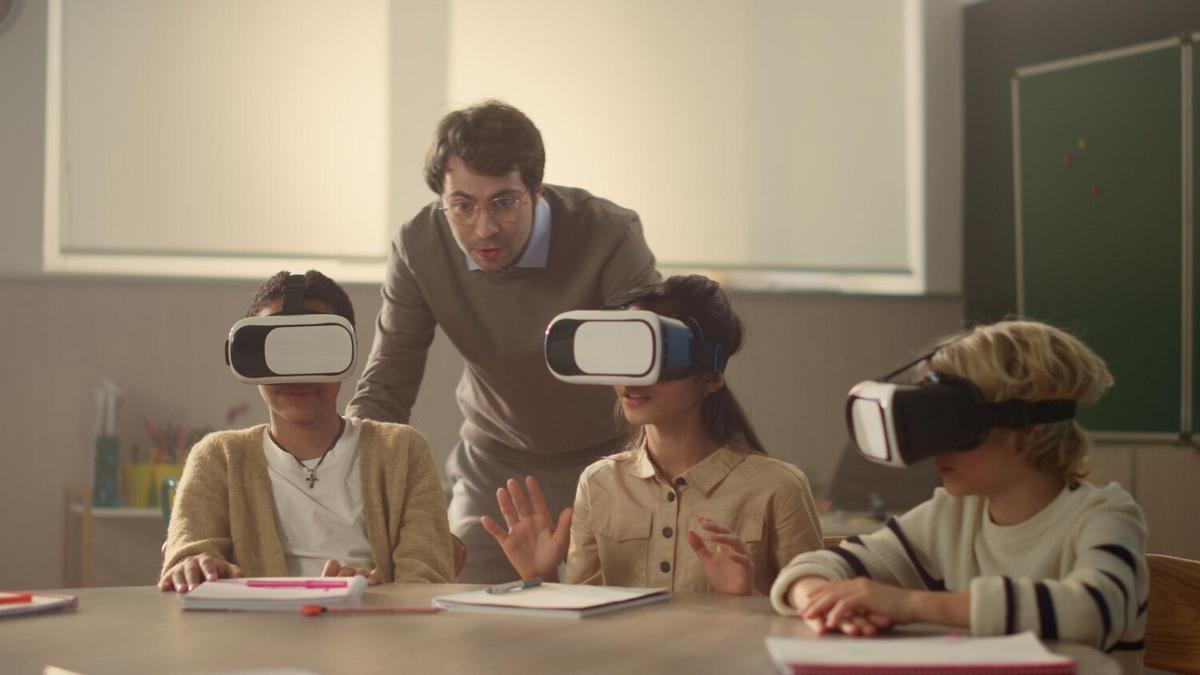
The Role of AR and VR in Modern Classrooms
Imagine a classroom where students can explore the solar system up close or walk through the ruins of ancient civilizations without leaving their seats. This is the transformative potential of Augmented Reality (AR) and Virtual Reality (VR) in modern education.
The Impact of AR and VR in Education
AR and VR technologies are paving the way for immersive learning experiences that were once thought to be the stuff of science fiction. These technologies offer interactive and engaging methods to enhance traditional teaching approaches, making learning more accessible and enjoyable for students of all ages.
Expert Insights
According to Dr. Michael Levine, an education technology specialist, “AR and VR provide a unique opportunity to engage students by bringing real-world experiences into the classroom.” This sentiment is echoed by many educators who have witnessed firsthand the positive effects on student engagement and comprehension.
Research and Statistics
A recent study by the Global VR in Education Market Report indicates that the VR education market is expected to grow at a significant rate, reaching approximately $1.7 billion by 2027. This growth is driven by increasing demand for experiential learning and advancements in technology.
Personal Experiences
Teachers like Emily, a high school history educator, have integrated VR into their lessons to bring history to life. “Using VR, my students can visit historical sites and witness historical events, which makes history tangible and exciting,” she shares.
How to Implement AR and VR
For schools looking to incorporate AR and VR, here are some actionable tips:
- Start small with cost-effective apps and tools that are easy to integrate.
- Ensure your infrastructure, such as Wi-Fi and hardware, can support these technologies.
- Train educators to effectively use these tools in their teaching methods.
Comparison of AR and VR Applications
| Feature | AR | VR |
|---|---|---|
| Equipment | Smartphones, tablets | VR headsets |
| Experience | Overlay digital content on real-world | Fully immersive |
| Cost | Generally lower | Higher |
| Applications | Interactive textbooks | Virtual field trips |
| Sensory Involvement | Visual and auditory | All-round sensory experience |
| Space Requirement | Minimal | Spacious |
| User Engagement | Moderate | High |
| Learning Curve | Lower | Higher |
Frequently Asked Questions
What are the primary benefits of AR and VR in education?
They enhance engagement, provide immersive experiences, and cater to different learning styles.
Are AR and VR suitable for all subjects?
Yes, they can be adapted to fit a wide range of subjects, from science to art.
What is the cost of implementing AR and VR in schools?
Costs vary depending on the technology and scale of implementation, but starting small can be cost-effective.
Conclusion
AR and VR are revolutionizing the educational landscape by offering new ways to engage and educate students. As these technologies become more accessible, their ability to transform learning experiences will only grow. Educators and institutions should consider incorporating AR and VR to stay ahead in the evolving world of education. By embracing these tools, we can create a more dynamic and inclusive learning environment for all students.